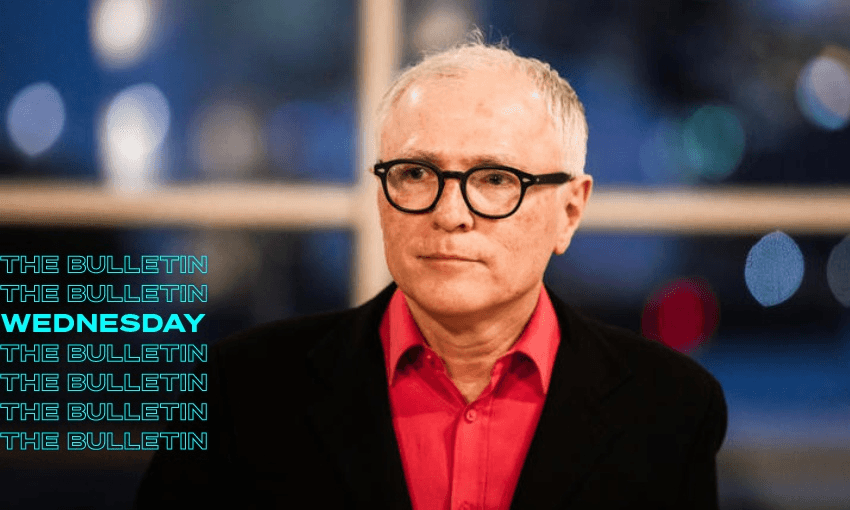Michael Baker speaks with Justin Giovannetti and The Bulletin about what’s next for the country and whether the traffic light system can survive.
Aotearoa is now in the midst of its omicron surge, with over 20,000 daily cases.
International comparisons of Covid-19 responses have always been difficult and less insightful than we’d like through the pandemic, however there are some important lessons that can be drawn from looking across the Tasman today. After abandoning their respective elimination strategies, both Aotearoa and Australia experienced steep omicron outbreaks. Australia’s outbreak, really the ones in New South Wales and Victoria, peaked in mid-January and quickly declined. Aotearoa’s surge is now nearly identical to Australia’s peak. I spoke to epidemiologist Michael Baker about what we can learn from the Australian omicron experience, and perhaps more importantly, where it points to next.
But first the cautionary tale of Hong Kong.
Hong Kong also maintained an elimination strategy and its omicron outbreak began at the same time as Aotearoa’s. As a share of the population, Hong Kong’s case numbers are now significantly worse, but we shouldn’t focus too much on those. Case numbers during omicron, especially when so much is based on self-reported rapid tests, are only helpful to a point. What’s more important is hospitalisations and deaths.
“We both haven’t really had the virus before. Our immunities all come from vaccination. New Zealand delayed the inevitable, so it turned out, until we got good vaccine coverage of our older, more vulnerable groups. Our peak hasn’t translated into large numbers of deaths. We will see a lot more deaths, but nothing like Hong Kong. It’s quite a frightening curve there,” he said.
The uncoupling of cases and deaths.
Aotearoa’s case numbers and its death rate have now uncoupled, they don’t follow very closely. For those questioning the value of vaccines, look to Hong Kong. The city had experienced very few Covid deaths prior to omicron. It’s now in the midst of a Covid death wave, with nearly 2,000 fatalities over the past month. The number of recorded Covid deaths is now increasing by nearly 200 daily. Aotearoa has had 65 deaths from Covid, in total. What’s the difference? Older residents in Hong Kong have low levels of vaccine protection, while the opposite is true in Aotearoa. The Wall Street Journal has written about the city’s deadly turn under omicron.
The Spinoff’s Covid data tracker has the latest figures.
Australia points to the world ahead.
Aotearoa’s cases aren’t really expected to peak for a few more weeks. If we’re lucky, Auckland could be near its peak now and the data will be messy over the next fortnight as the country’s regions reach their own individual peaks. Once that happens, case number should fall rapidly. But they won’t fall to zero.
“Places like New South Wales and Victoria are good places to look, because that’s what we’ll look like post peak. We will have ongoing transmission in New Zealand, potentially indefinitely, no one knows for how long,” said Baker.
New South Wales’ infections levelled out a month ago at about 10,000 cases daily. Victoria is also hovering around 6,000 daily cases a day. Both those states have larger populations than Aotearoa, but they give us a sense of what cases could look like. “That’s what we can expect. It’ll rise steeply, fall steeply and settle around a new equilibrium,” said Baker.
Why won’t omicron burn itself out?
“Your antibodies to omicron wane quite rapidly, so we’ll all be susceptible again in a few more months. People who weren’t infected in this first wave may well get infected later in the year. The effects of the booster will also wane, so we’ll get more vulnerable again,” according to Baker.
What comes next, either more boosters or a different approach, is unclear.
The future of the traffic light system.
I asked Baker if it was likely we could move to orange in the preview provided across the Tasman. He was uncertain. The traffic light system seems more tailored for a delta world, where the armour of vaccines is more complete.
“I think we need to create a new system from the one we had in the past, that’s more fit-for-purpose. The traffic light system is two things, it is bits of the alert system with an added indoor vaccine mandate. I find it quite complex and you can’t separate it out from what mandates will be needed in the future. I prefer a simpler alert system that just tells you, at a population level, what precautions you need to take out in the community. It’s simple, it’s unambiguous and it’s not divisive, we’re all in it together,” he said.
Speaking to The Bulletin, Covid-19 minister Chris Hipkins said the traffic light system will remain in its current form, but he hadn’t given it much thought for a post-peak world: “Let’s not get ahead of ourselves. There will be plenty of time to consider that.” Looking across the Tasman, about a month.


